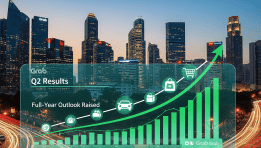A Paradigm Shift for the Global Luxury Auto Market
In a sector long defined by prestige, advanced technology, and robust margins, Porsche’s half-year 2025 report reveals a new, sobering reality for luxury automakers. The German high-performance car manufacturer announced a dramatic 67% drop in operating profit, alongside falling sales and muted forecasts. CEO Oliver Blume’s unusually candid tone captured headlines, stressing that the situation is not a “passing storm” but rather a profound and structural transformation of the global marketplace. “The world is changing dramatically—and above all, in a way no one anticipated a few years ago,” said Blume, who is also CEO of Volkswagen. “Some of the strategic decisions made back then look very different in today’s light.”
Quantitative Overview: Sharp Declines in Profit and Sales
Porsche’s H1 2025 report delivers stark figures. Operating profit plunged from €3.04 billion last year to just €1 billion—a 67% decrease. Total sales fell 6.7% to €18.2 billion, though this was slightly ahead of early analyst estimates. The number of vehicles delivered to customers dropped 10% year-over-year, with the sharpest falls seen in China and other developing Asian markets, but also in Europe and the U.S. This steep decline in profitability is especially striking given that Porsche has spent the last decade enjoying exceptional margins, global brand demand, and a tailwind from electrification. Now, those advantages are being offset by a much tougher operating environment, from currency pressures to rising input costs and a consumer who is reordering priorities.
Root Causes: Macro, Geopolitics, and Market Realities
According to Porsche’s leadership, the challenges are deeply layered. At the macroeconomic level, the industry is grappling with global interest rate hikes, persistent inflation in raw material costs, and exchange rate volatility—particularly versus the U.S. dollar and Chinese yuan. Higher financing costs hit both the company and its buyers. Geopolitically, instability in Eastern Europe, ongoing U.S.-China tensions, Russia-related sanctions, and cross-border trade restrictions are all impacting the flow of goods and critical components.
Market dynamics have also shifted dramatically. In China, a key engine of growth for all luxury automakers, Porsche saw demand drop by 18%—a direct result of growing competition from domestic brands, heightened price sensitivity, and tighter local regulations. The European market has softened as well, facing fiscal tightening, stricter environmental policies, and a consumer shift toward compact and electric vehicles. Even in the U.S., traditionally resilient demand for high-end cars was affected by a broader slowdown in discretionary spending.
Company Response: Strategic Reassessment and a New Cautious Approach
Blume, who also heads the Volkswagen Group, has been transparent about the company’s predicament. “We continue to face significant challenges worldwide. This is not a passing storm,” he said. Porsche is reevaluating strategic bets made years ago, in light of technology shifts, changing consumer behavior, and new regulatory hurdles.
In response, Porsche’s management announced a set of efficiency measures: delaying or canceling select future investments, refocusing on the most profitable models, and adjusting production lines to better match demand for new electric vehicles. The company remains committed to innovation and customer service, but is adopting a much more cautious investment posture for the coming years.
Competitive Landscape: Technology, Branding, and Consumer Preferences
A key takeaway from this crisis is the intensifying competition within the luxury and electric vehicle segments. New Chinese players like NIO and BYD are now challenging established European brands in their home market with attractive pricing and innovative tech. The global market is flooded with models, technology gaps are narrowing, and brand reputation alone is no longer a guarantee of growth.
Furthermore, even luxury consumers are increasingly sensitive to price, taxes, and sustainability—particularly in countries with strict regulatory frameworks. While Porsche offers hybrid and electric models, the pace of innovation must accelerate and the company must continually reinforce its value proposition to maintain its edge.
Financial Realities: Rising Costs, Financing Pressures, and Margin Compression
The report highlights a significant increase in costs—production, materials, logistics, and shipping—much of it driven by ongoing trade tensions and supply chain disruptions. At the same time, higher interest rates are affecting both Porsche’s own cost of capital and its customers’ ability to finance high-end vehicles. As a result, Porsche’s profit margins shrank from 16.7% in H1 2024 to just 5.5% in H1 2025.
Currency headwinds have further eroded nominal earnings, especially in sales outside the eurozone. Depreciating currencies in emerging markets weighed on reported profits, adding another layer of complexity to global operations.
Forward Outlook: Challenges, but Also Opportunities
Despite the sober outlook, Porsche sees some areas of resilience. Brand demand remains robust in Germany, the Middle East, and certain U.S. regions, particularly for new electric and high-performance models. The company is planning to launch innovative vehicles with a focus on driving experience, advanced features, and range, in a bid to reignite buzz around the brand.
Porsche is also investing in customer experience, digital services, automotive software, and expanding its sales and service networks in strategic markets. By doing so, the company aims to protect its market share and brand equity, even as the industry faces a period of softness.
Strategic Analysis: Repositioning and Lessons Learned
Blume places Porsche at a critical inflection point: the company is now prioritizing efficiency, focus, and innovation over growth at any cost. By projecting a message of transparency and responsibility, Porsche is signaling reliability to the market and aiming to preserve investor trust through a period of contraction.
The most important lesson, Blume suggests, is the need for constant adaptation: “Decisions that seem right in a bull market can prove risky in a downturn.” Porsche is updating its risk management, reevaluating large-scale investments, and embracing a more flexible, market-responsive strategy.
Comparison, examination, and analysis between investment houses
Leave your details, and an expert from our team will get back to you as soon as possible
* This article, in whole or in part, does not contain any promise of investment returns, nor does it constitute professional advice to make investments in any particular field.
To read more about the full disclaimer, click here- Articles
- •
- 7 Min Read
- •
- ago 18 minutes
 Rolls-Royce Soars to New Heights as Jet Engine Demand Powers Earnings Outlook
Rolls-Royce Soars to New Heights as Jet Engine Demand Powers Earnings Outlook
Rolls-Royce Holdings PLC has significantly upgraded its full-year outlook, citing a sharp rebound in demand for its jet engines. The
- ago 18 minutes
- •
- 7 Min Read
Rolls-Royce Holdings PLC has significantly upgraded its full-year outlook, citing a sharp rebound in demand for its jet engines. The
- Articles
- •
- 8 Min Read
- •
- ago 40 minutes
 The AI Surge: When Tech Investments Become the Engine of Growth
The AI Surge: When Tech Investments Become the Engine of Growth
A newly published chart from the U.S. Bureau of Economic Analysis (BEA) reveals a striking shift in the dynamics of
- ago 40 minutes
- •
- 8 Min Read
A newly published chart from the U.S. Bureau of Economic Analysis (BEA) reveals a striking shift in the dynamics of
- Articles
- •
- 7 Min Read
- •
- ago 1 hour
 Grab Surpasses Expectations with Robust Q2 Results, Raises Full-Year Outlook
Grab Surpasses Expectations with Robust Q2 Results, Raises Full-Year Outlook
Grab Holdings Ltd. (NASDAQ: GRAB) posted strong second-quarter results for FY2025, delivering top- and bottom-line beats and reaffirming its momentum
- ago 1 hour
- •
- 7 Min Read
Grab Holdings Ltd. (NASDAQ: GRAB) posted strong second-quarter results for FY2025, delivering top- and bottom-line beats and reaffirming its momentum
- Articles
- •
- 7 Min Read
- •
- ago 2 hours
 China Flashes Warning Signs as July PMI Data Disappoints
China Flashes Warning Signs as July PMI Data Disappoints
Both manufacturing and services sectors underperform, fueling calls for renewed stimulus from Beijing Dual Weakness in Industry and Services Financial
- ago 2 hours
- •
- 7 Min Read
Both manufacturing and services sectors underperform, fueling calls for renewed stimulus from Beijing Dual Weakness in Industry and Services Financial












